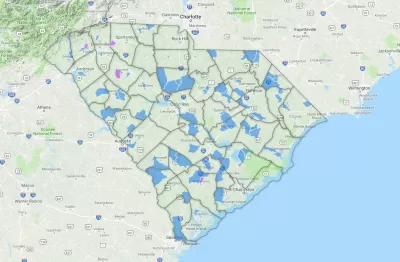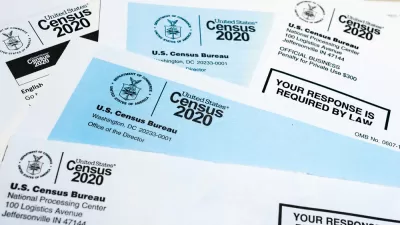Down to the level of individual census tracts, a team of researchers has developed national maps showing where upward mobility is probable, and where it isn't.

Hearkening back to demographic researcher Dustin Cable's Racial Dot Map, a team of researchers including Harvard's Raj Chetty have worked with the U.S. Census Bureau to assemble a compressive picture of which neighborhoods tend to foster children who get ahead, and which fail to do so.
The Opportunity Atlas, an interactive mapping tool, allows users to pinpoint specific census districts for comparison with the surrounding area, or zoom upward to see how counties and regions fare. According to reporting by Emily Badger and Quoctrung Bui, "for any government program or community grant that targets a specific place, this data proposes a better way to pick those places — one based not on neighborhood poverty levels, but on whether we expect children will escape poverty as adults."
The researchers, who in addition to Chetty include Nathaniel Hendren at Harvard, John N. Friedman at Brown University, and Maggie R. Jones and Sonya R. Porter at the Census Bureau, "believe much of this variation is driven by the neighborhoods themselves, not by differences in what brings people to live in them. The more years children spend in a good neighborhood, the greater the benefits they receive."
The question is whether policymakers, planners, philanthropists, and a whole range of neighborhood stakeholders will be able to use more finely-tuned data on opportunity to change places where "the federal government has spent billions [...] over the years, funneling as much as $500 million into some individual census tracts since 1990."
FULL STORY: Detailed New National Maps Show How Neighborhoods Shape Children for Life

Maui's Vacation Rental Debate Turns Ugly
Verbal attacks, misinformation campaigns and fistfights plague a high-stakes debate to convert thousands of vacation rentals into long-term housing.

Planetizen Federal Action Tracker
A weekly monitor of how Trump’s orders and actions are impacting planners and planning in America.

In Urban Planning, AI Prompting Could be the New Design Thinking
Creativity has long been key to great urban design. What if we see AI as our new creative partner?

San Francisco Mayor Backtracks on Homelessness Goal
Mayor Dan Lurie ran on a promise to build 1,500 additional shelter beds in the city, complete with supportive services. Now, his office says they are “shifting strategy” to focus on prevention and mental health treatment.

How Trump's HUD Budget Proposal Would Harm Homelessness Response
Experts say the change to the HUD budget would make it more difficult to identify people who are homeless and connect them with services, and to prevent homelessness.

The Vast Potential of the Right-of-Way
One writer argues that the space between two building faces is the most important element of the built environment.
Urban Design for Planners 1: Software Tools
This six-course series explores essential urban design concepts using open source software and equips planners with the tools they need to participate fully in the urban design process.
Planning for Universal Design
Learn the tools for implementing Universal Design in planning regulations.
Gallatin County Department of Planning & Community Development
Heyer Gruel & Associates PA
JM Goldson LLC
Mpact (founded as Rail~Volution)
City of Camden Redevelopment Agency
City of Astoria
Jefferson Parish Government
Camden Redevelopment Agency
City of Claremont





























